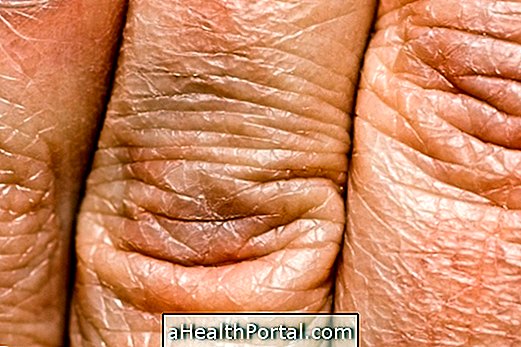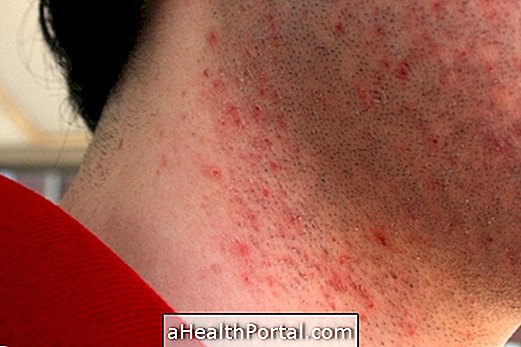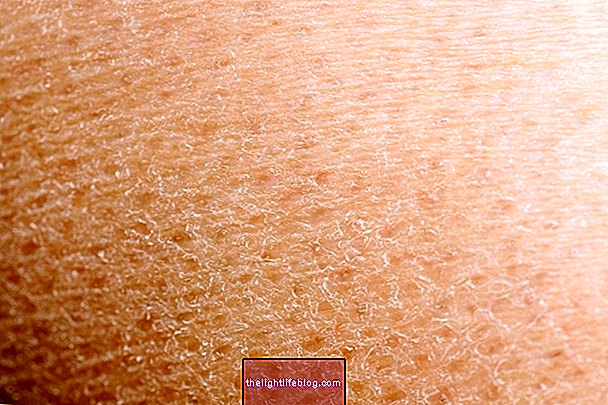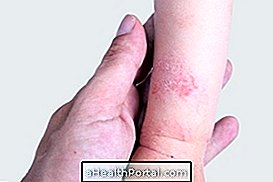Getting a tattoo can be a risky decision for health because the inks used can be toxic.
Red, orange and yellow inks are the most dangerous because it contains azolic compound that disintegrates when exposed to the sun, spreading throughout the body and may increase the risk of cancer.
The green and blue colors in metallic tones contain nickel and therefore can cause contact allergy, being forbidden in many cosmetics and costume jewelry. The black color, despite having less risks, contains toxic substances such as carbon black, based on petroleum, tar and rubber, which increase toxins in the body, facilitating the onset of diseases.
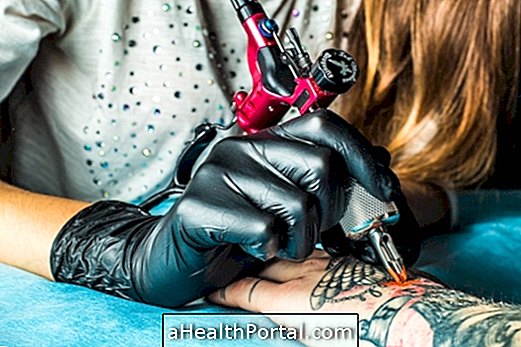
Main risks of tattooing
The main risks of getting a tattoo include:
- Allergic reaction to used paint, which may arise even after many years of tattooing;
- Itching, inflammation, and local scaling when the region is exposed to the sun;
- Formation of keloids that are ugly scars with relief and bumps;
- Greater risk of being contaminated with diseases such as Hepatitis B or C, AIDS or Staphylococcus aureus if the material used is not disposable.
In addition, small droplets of the ink can spread throughout the body through the lymphatic circulation, and these consequences are not yet fully understood. Facilitating the development of cancer is a possibility, however, as cancer can take several years to manifest, it becomes difficult to prove the direct link.
The risks of using these paints exist because these substances, despite being regulated by Anvisa, can not be classified as medicines or cosmetics, which makes it difficult to regulate and study them. Another important factor is that in addition to the lack of studies on the effects of tattooing on humans in the short, medium and long term, animal testing is not allowed. Learn What you can not eat after getting a tattoo (because it disrupts healing).
Caring for a tattoo
To reduce the risk of developing any of these complications it is important to have some care such as:
- Require all material to be new and disposable, avoiding materials that are sterilized and reused;
- Prefer small black tattoos ;
- Do not tattoo on spots or spots, as this can make it difficult to see any change in the size, shape or color of the pint;
- Apply a healing ointment or cream or antibiotic after its completion and for 15 days;
- Apply a good layer of sunscreen, whenever exposed to the sun, to protect the skin and prevent the tattoo from fading;
- Do not go to the beach or pool in the first 2 months to reduce the risk of infections;
- Do not donate blood for 4 months after the tattoo.
When observing any changes in the skin, the tattoo site should go to the doctor to perform tests and start the appropriate treatment that may include the use of medications to control the symptoms or illness that may have arisen and also the removal of the tattoo. Understand how this procedure is done: Laser treatment to remove tattoo
Henna Tattoo also has scratches

Getting a henna tattoo is also a choice that can put health at risk because, just like in the definitive tattoo black ink, in the case of black henna there may also be allergy:
- Itching, redness, spotting, blistering or discoloration of the skin at the tattoo site;
- Red spots can spread throughout the body which usually appear within up to 12 days.
In this case one should go to the dermatologist to begin the treatment which consists of removing the tattoo and applying creams and lotions like corticosteroids on the spot.
After resolving the allergy the henna tattoo site may be permanently marked with high relief, or the skin may become lighter or darker throughout the outline of the design.
Is Henna a natural substance?
Henna is a dye from a plant called Lawsonia inermis sp, which after being dried is reduced to dust. This powder is mixed to a paste that allows a better application of the product on the skin, having a coloration closer to brown. In this way, henna extracts are generally more natural and, therefore, have a lower risk of allergic reaction.
However, to achieve the black coloration of the henna, other substances such as the synthetic dye paraphenylenediamine (PPD) are added. The darker the color, the more ink additives it contains and therefore the greater the risk of allergies because it can no longer be considered a natural product.
So the tattoo that has less health risk are the tattoos of natural henna, which has a coloration closer to brown, with a slight reddish tint and that are the tattoos carried out by indigenous tribes, for example. However, these are not definitive and need to be retouched over time.






